“You be safe,” was the familiar parting cry as we left Bunkie fire station this morning. Thanks to a not so rare moment of foresight by Terry, our trip to the Dollar General last night meant we could feast on Fruit and Bran (fibre is sadly lacking in the American diet) and while we ate the crew warned us the route we were taking could be deadly. There was no hard shoulder and people took the bends at 70 or 80mph apparently.
If we’d changed our plans everytime we were told we were about to cycle on ‘the most dangerous road in America’ we’d never have made it across the States the first time, let alone return for a second crossing. But since these were the local fire-fighters, who responded to nearby accidents, we decided to listen more closely than normal – and then decided to ignore the well-meaning advice.
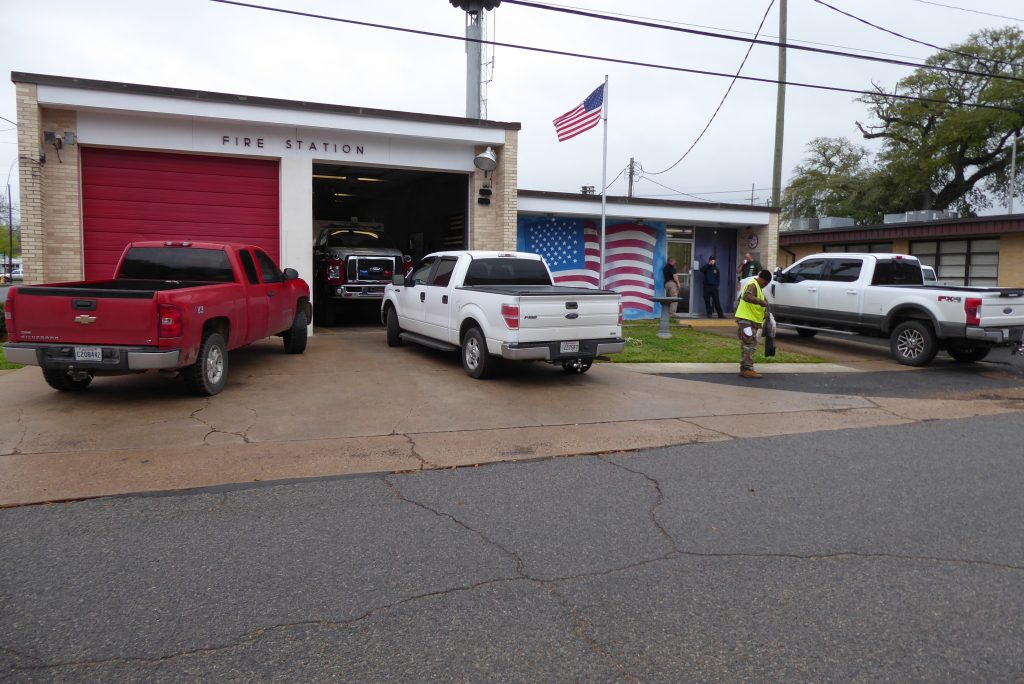
Setting off wearing freshly washed kit (courtesy of the fire department washing machines) we set off for a quick whizz through town before departing on a seventy mile jaunt to Oberlin. Since arriving in Bunkie we suspected there was something a little corny about the town (and not just my jokes) so finding out this was the home of the annual Louisiana Corn Festival (which takes place in June) came as no surprise.
“One of the highlights of the year is the annual Corn Shucking Contest”.
The festival and its slogan ‘Aw Shucks’ began in 1986 and celebrates the impact agrictulture has on the economy. Each year a local corn farmer is honoured and there are live bands, parades and as much hot buttered corn as you can get your teeth round. One of the highlights of the year is the Corn Shucking Contest, with competitors peeling back the outer leaves and silks of the cobs against the clock. The town has attempted to break the world record for corn shucking in the past, but that honour is currently held by Michael Diggins Jr, who shucked 13 ears of corn in a minute at Scarborough, Maine in 2015. That must really stick in the teeth for the people of Bunkie.
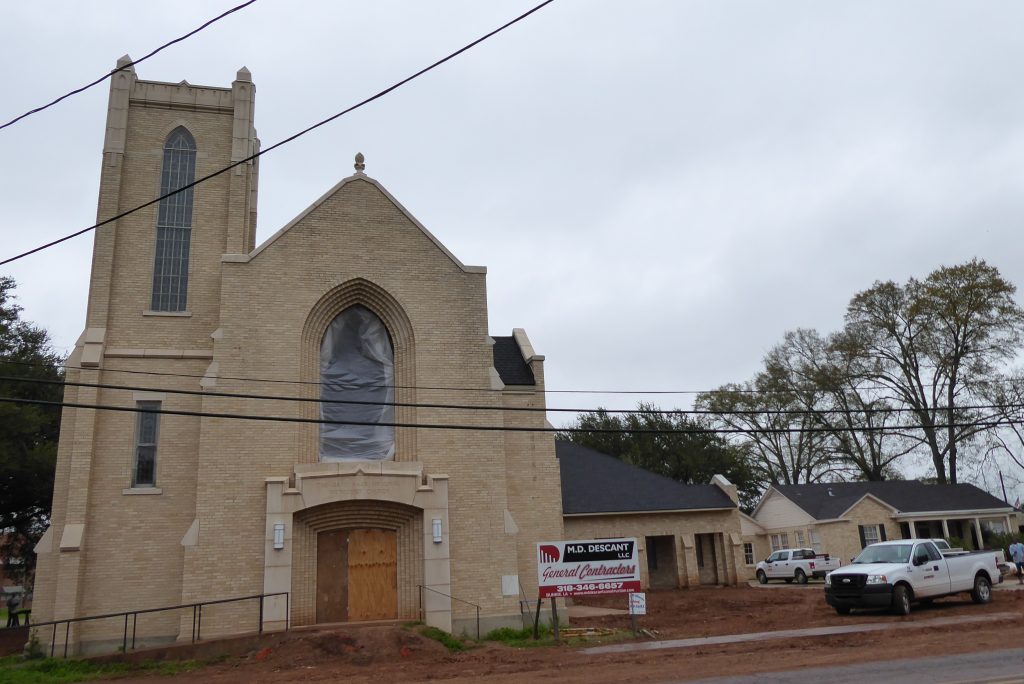
Bunkie had some very attractive houses in the roads sprouting off Main Street and we even saw a new Methodist Church being built. There’s obviously still money in religion, but there were much poorer properties on the outskirts of town. Whether this was still a result of people migrating to the larger towns and cities we weren’t sure, but it was clear some of the residents of Bunkie were still doing a bunk, with the United States Census Bureau reporting the population had dropped from 5260 in 1990 to 4006 in 2017. The 2000 census showed 37.8% of the population were below the poverty line.
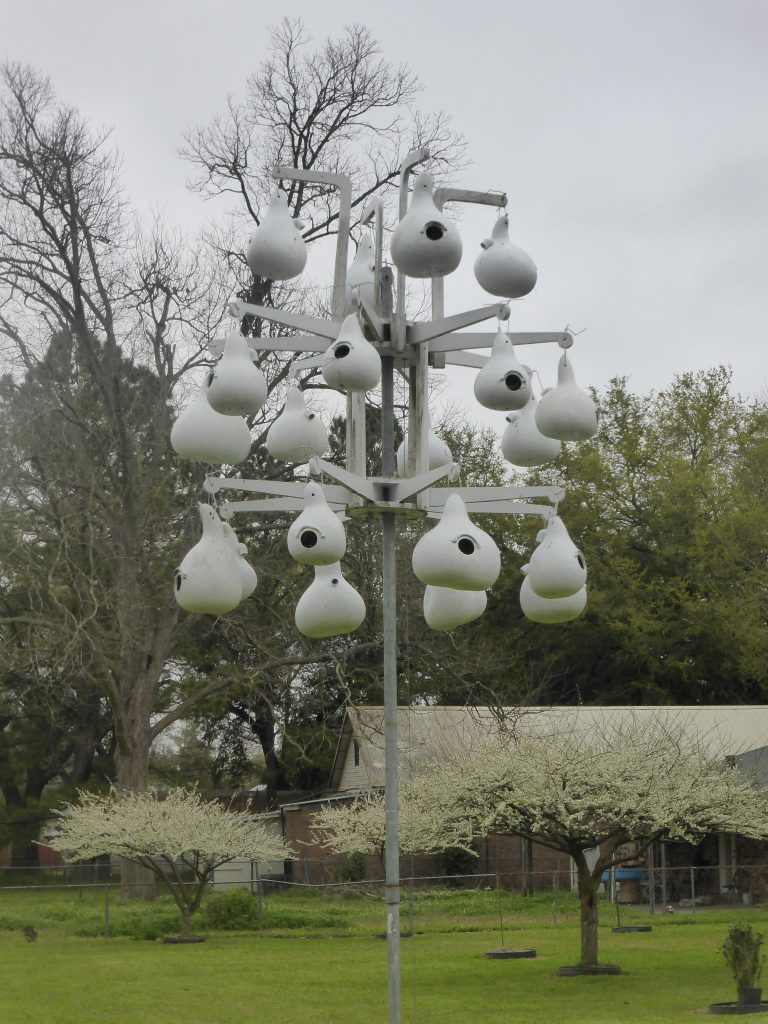
Cycling out of town, our rule of never taking advice about road conditions from non-cyclists paid off and we stuck to the ACA maps discovering gentle country roads with very little traffic that was all respect and no honking horns. In one of the gardens we passed we saw Swifts or Martins occupying man made nest boxes shaped like gourds and we spotted more bee hives which got Terry, a avid apiarist, very excited. There was some drizzle, but the weather was far warmer than the day before.
Yesterday’s cries of “incoming” to warn of dogs rapidly became “multiple incoming” as larger packs descended upon us. The unexpected headwind didn’t help our outrunning strategy. But we were relieved to find that five very interested Dobermans were safely trapped behind wire fences. To be fair, most of the hounds gave chase and then came to an abrupt halt on their property’s boundaries, content just to make the point to the two travelling Englishmen that this was their territory. Terry did have to use his high frequency Dog Dazer on one occasion, convinced that one of the chasing canines was particularly partial to a Wooller rumpsteak.
“We’ve probably had more meals in Subway than almost any other chain in the States, mainly because it’s often the only source of green stuff”.
As we rode around the outskirts of the Chicot State Park the pitted road we’d been riding on transformed into smooth tarmac and we even began to experience some gentle undulations through the woodland. Turtles plopped in creeks and the trees were alive with birds. Flowers were blooming along the ditches and there were now green shots and leaves on the trees. Spring has nearly sprung!
“This is how it should be!” remarked Terry. “It’s just a shame it took 1000 miles to kick in!”
In Ville Platte we stopped for lunch in a local Subway. We’ve probably had more meals in Subway than almost any other chain in the States mainly because it’s often the only source of green stuff in rural areas. As we tucked into our staple diet of foot long veggie baguettes we reflected again on the lack of a varied diet on much of rural America.
Riding out of town the Bunkie firemen’s words of warning came back to choke us – almost literally. Ville Platte won the award for the most dangerous drivers we’d encountered so far including a local truck driver who seemed to delight in revving at speed around the one way system and dumping his noxious black gases on us. Nice.
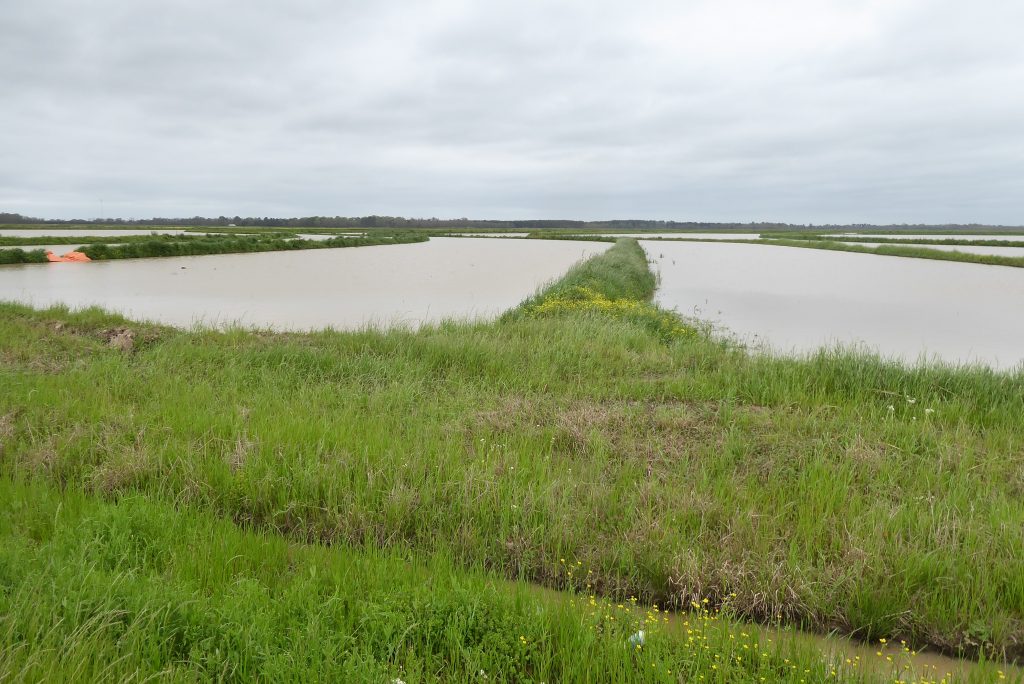
Coming out of Ville Platte the landscape became much flatter and we passed mile upon mile of crayfish (crawfish in Louisiana) ponds, looking for all the world like paddy fields were it not for rows of pots sticking their heads out of the water. At one point we came across a man on a shallow draft boat with wheels on each corner and a paddle on the back checking the pots – it would just power across the dykes from one pond to another and continue on.
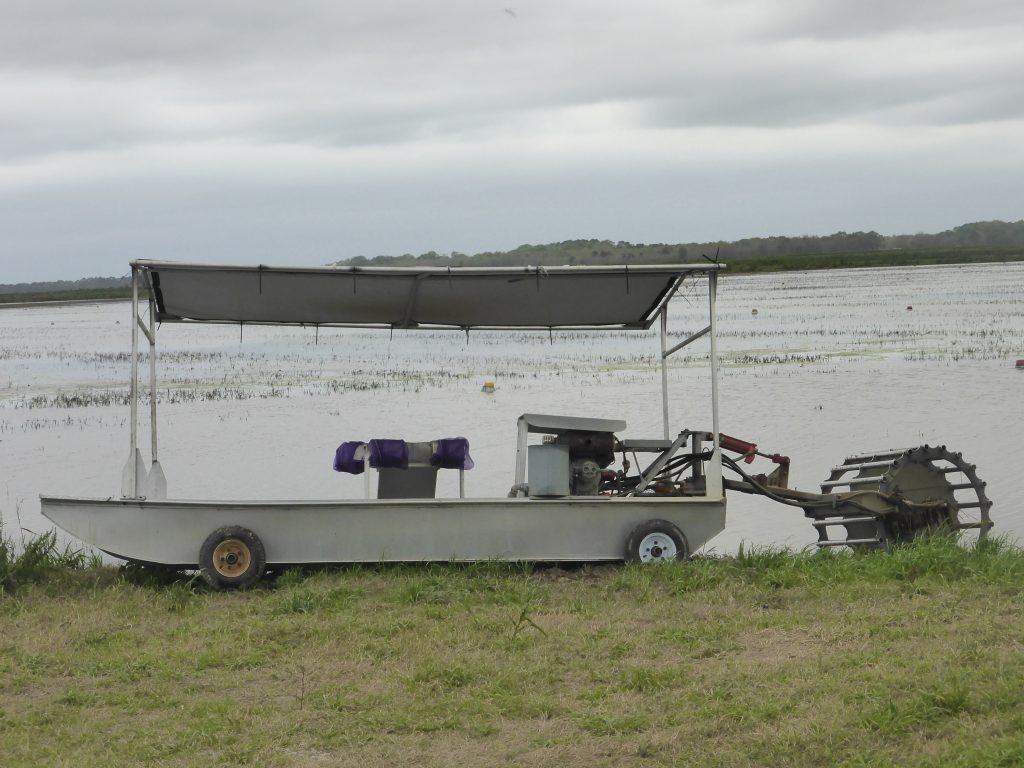
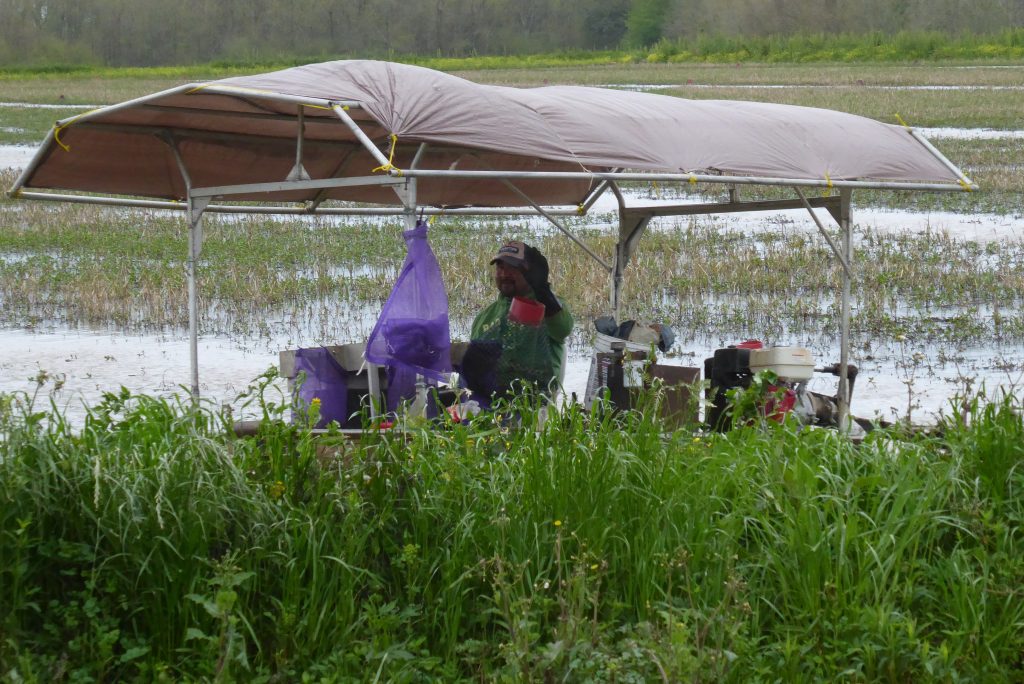
The local egret population seemed particularly interested – and the number of squashed turtles on the road indicated further predation. Occasionally you’d come across a pond that had been entirely drained with just a muddy silt on the bottom. On the higher ground cattle were grazing.
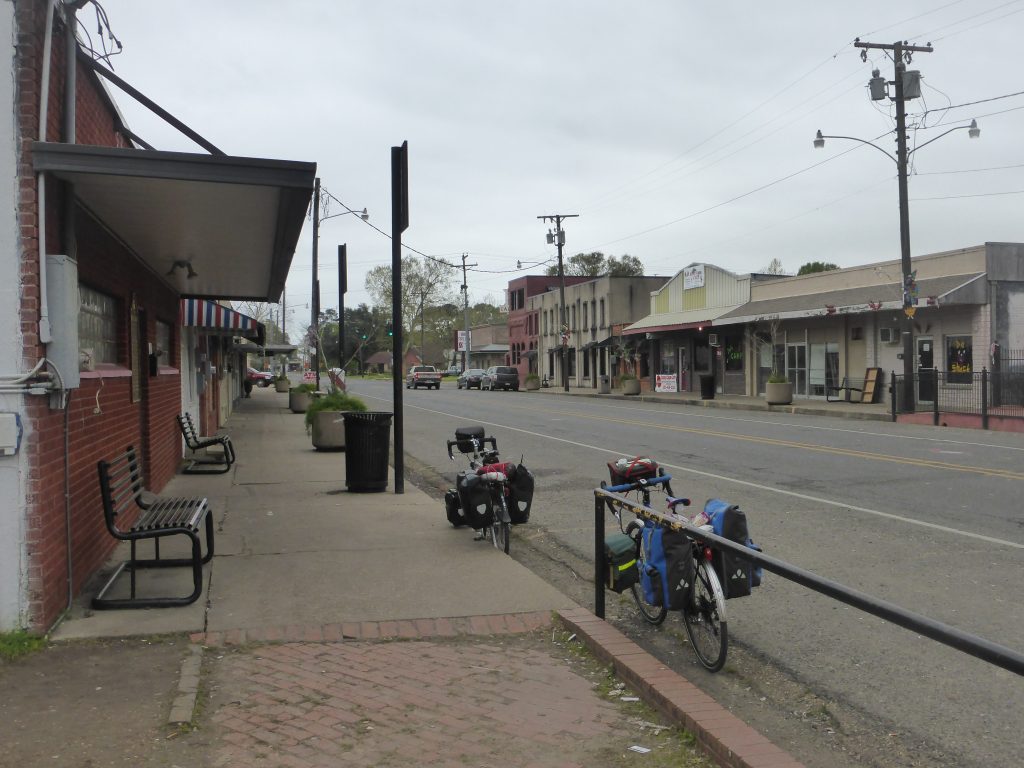
Mamou seemed to be completely closed which was a real shame since it proclaimed to be the Cajun capital, so sadly we experienced neither music nor great cooking. This is one of the great drawbacks of being a long distance rider. You might be able to time your ride to coincide with Mardi Gras in New Orleans, but unless you ride as slowly as a crayfish walks, you’ll be long gone by the time the annual two day Mamou Cajun Music Festival hits town in September.
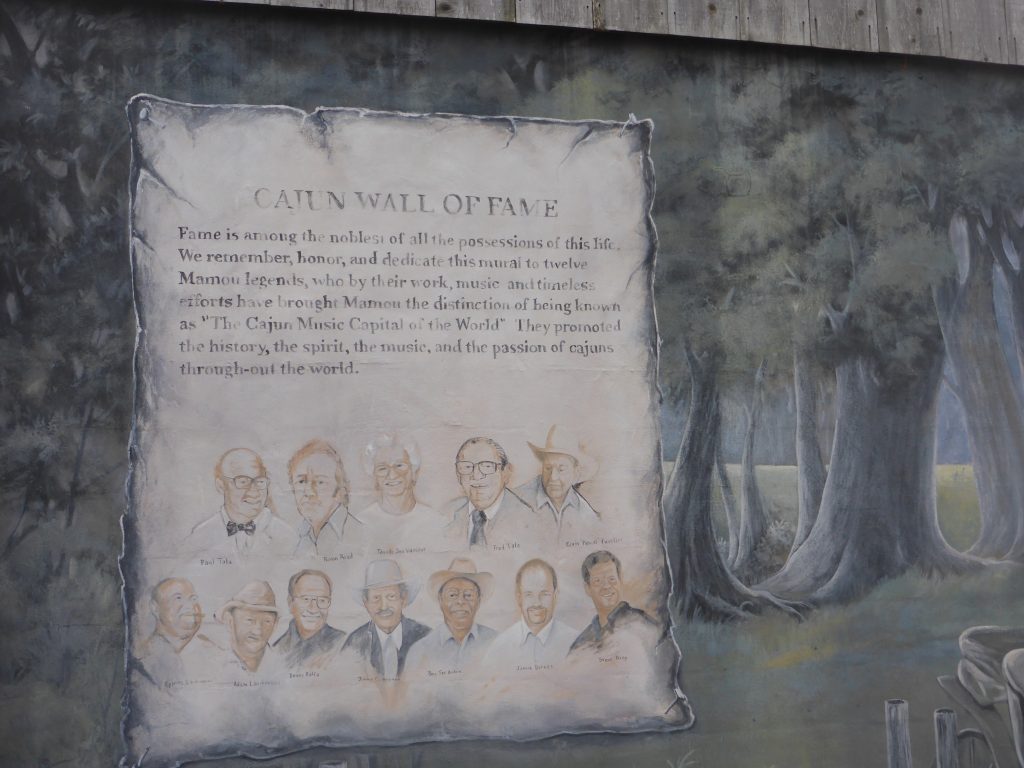
The event began in the 1970s when some of the local citizens became concerned the area’s Cajun culture was dying. What started as the Mamou Cajun Day became the Mamou Cajun Music Festival in the 1980s and in 1985 an organisation was formed dedicating itself to the preservation of Cajun culture and heritage through traditional music.
Leaving the Cajun Capital behind, we approached Oberlin in a headwind as the sky grew increasingly darker – and for the last two miles it started to rain. Our mood began to reflect the weather when we discovered the motel we’d hoped to stay in was undergoing renovations – which explained why we’d been unable to get in touch.
Desperate to find somewhere to stay we tried to get hold of the Sheriff, the fire dept and the tourist information office. We even tried to see if we could camp on the grass outside the local Catholic Church, but that suggestion was a no-goer. However a woman I met outside the church kindly offered to help us and a little later pulled up in her car and informed us we had permission from the mayor to sleep behind the visitor’s centre. “It’s a small town – we like to help people,” she said.
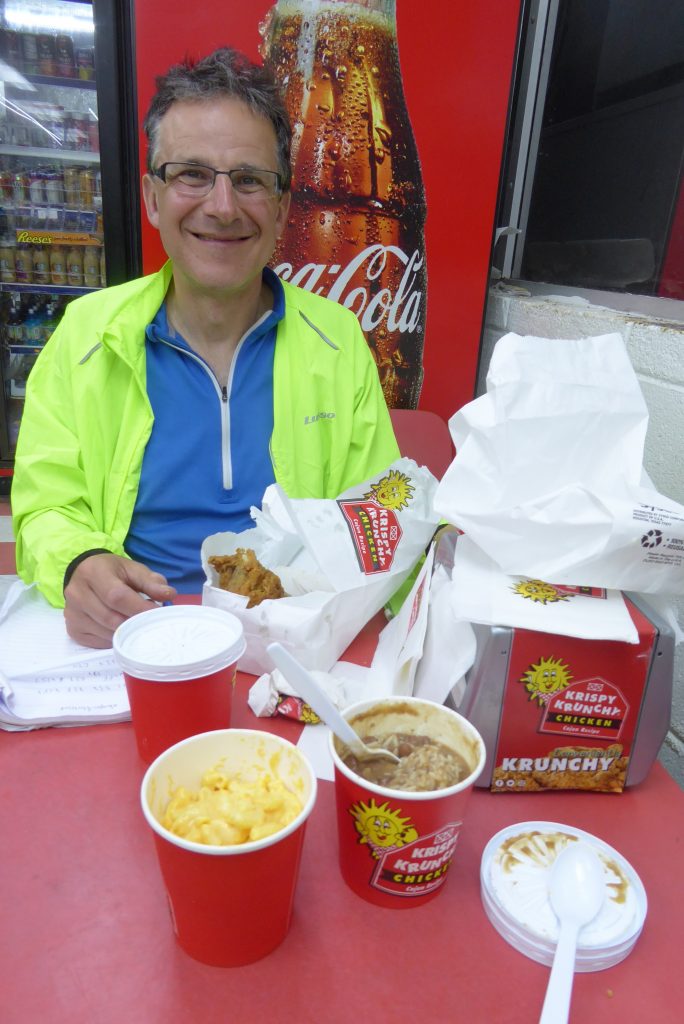
It was a bit exposed, but on the plus side had fantastic wi-fi! We managed to kill a few hours in a local gas station dining on Cajun chicken, red beans, mac and cheese and Magnum ice-creams before returning to put up our tents. We are so well versed at doing this now we probably could do it in pitch darkness. Considering we were in quite a public place we attracted no attention during the night and were up and packed early the next morning. The town of Oberlin just didn’t know what it had missed.
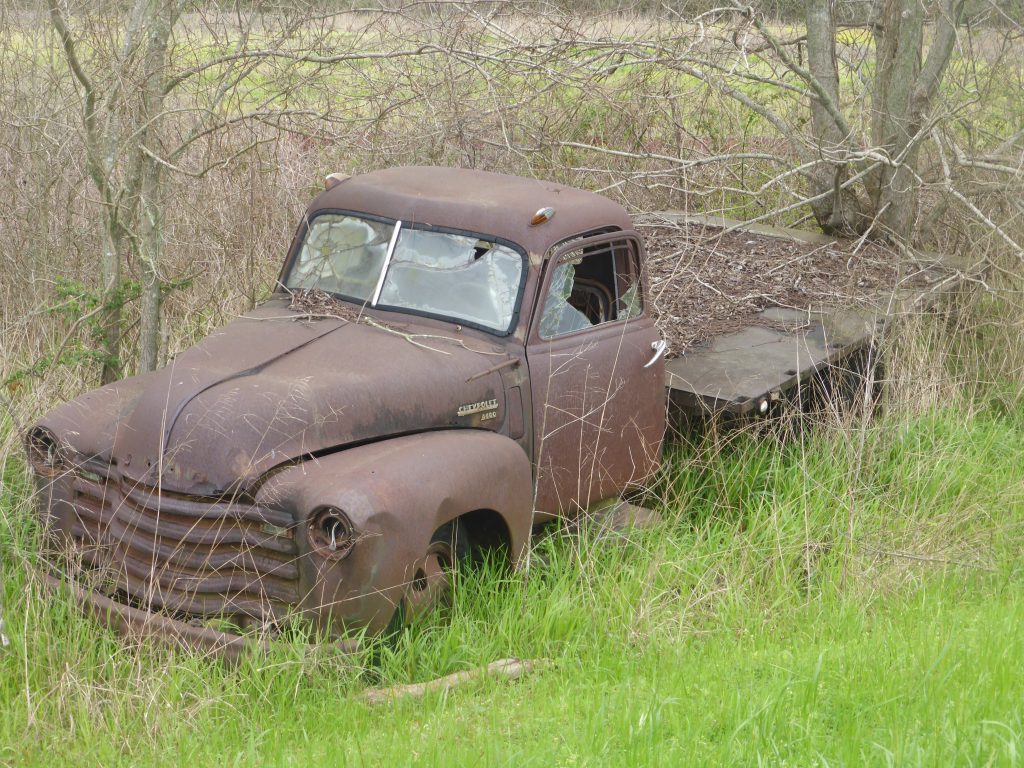
Total Miles: 74.77
Total miles since Anastasia State Park: 943.25
